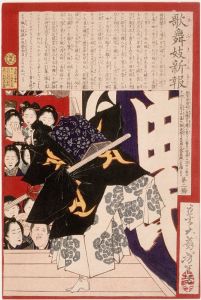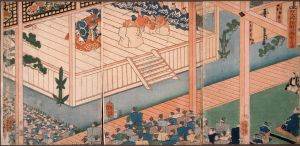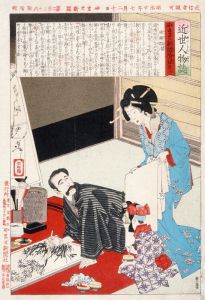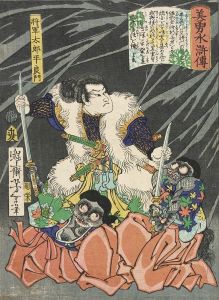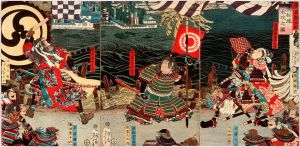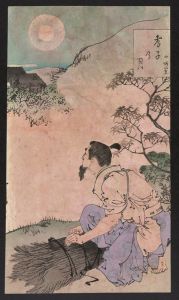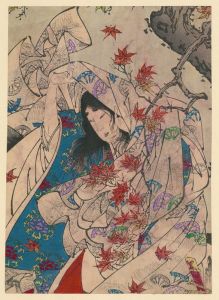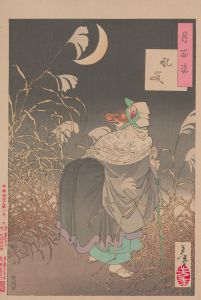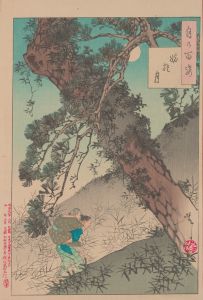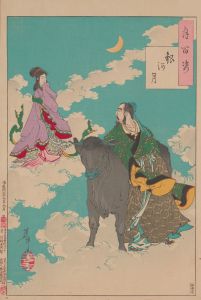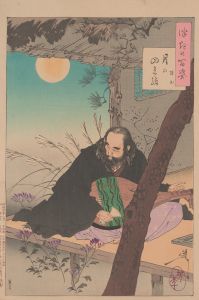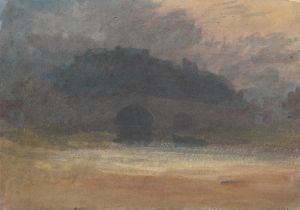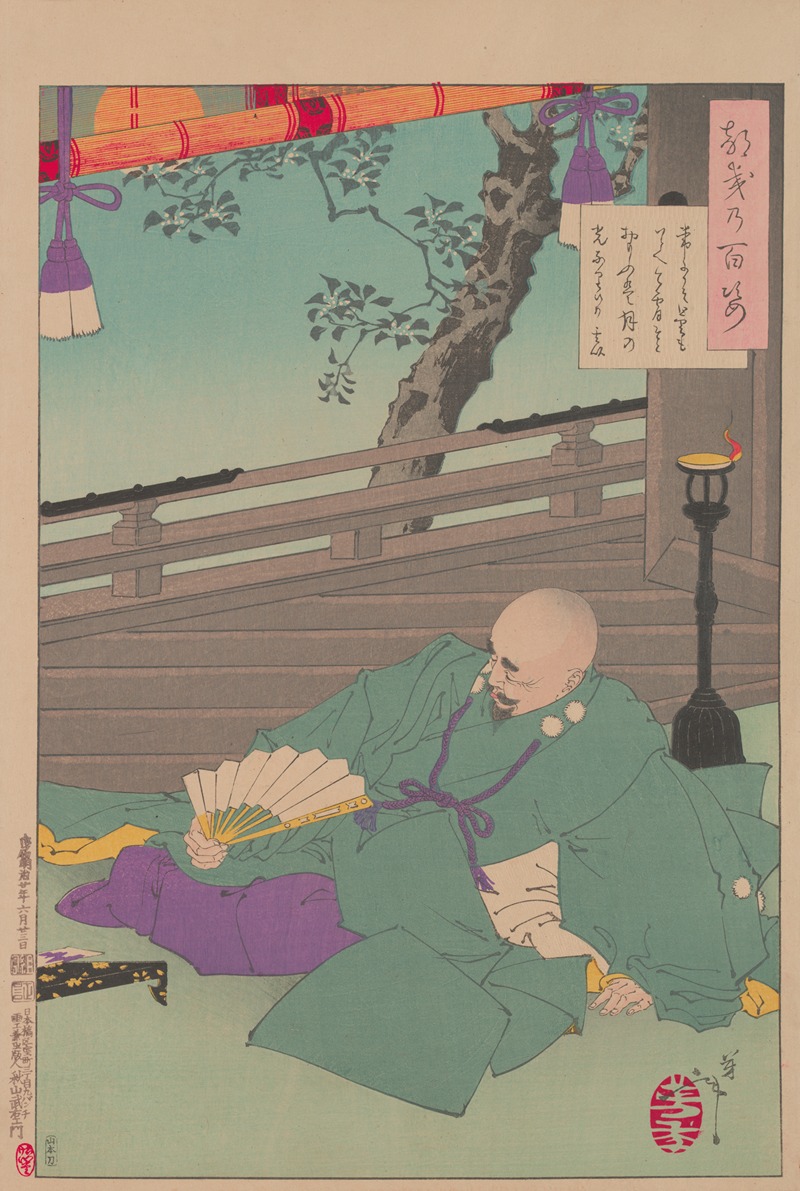
Gen’i viewing the Moon from his castle
A hand-painted replica of Tsukioka Yoshitoshi’s masterpiece Gen’i viewing the Moon from his castle, meticulously crafted by professional artists to capture the true essence of the original. Each piece is created with museum-quality canvas and rare mineral pigments, carefully painted by experienced artists with delicate brushstrokes and rich, layered colors to perfectly recreate the texture of the original artwork. Unlike machine-printed reproductions, this hand-painted version brings the painting to life, infused with the artist’s emotions and skill in every stroke. Whether for personal collection or home decoration, it instantly elevates the artistic atmosphere of any space.
"Gen’i Viewing the Moon from His Castle" is a woodblock print created by the renowned Japanese artist Tsukioka Yoshitoshi (1839–1892). Yoshitoshi is widely regarded as one of the last great masters of the ukiyo-e tradition, a genre of Japanese art that flourished during the Edo period (1603–1868). This particular work is part of Yoshitoshi's celebrated series One Hundred Aspects of the Moon (Tsuki hyakushi), which was published between 1885 and 1892. The series consists of 100 individual prints, each exploring themes related to the moon, drawing inspiration from Japanese history, folklore, literature, and theater.
The subject of this print is Gen’i, a historical figure from Japan’s Sengoku (Warring States) and early Edo periods. Gen’i, also known as Tōin Sōetsu (1539–1603), was a Buddhist monk and a trusted advisor to Toyotomi Hideyoshi, one of Japan’s most prominent unifiers. Later, Gen’i served the Tokugawa shogunate, playing a significant role in the political transition following Hideyoshi’s death. He was known for his wisdom and diplomacy, particularly during the turbulent years of Japan’s unification.
In the print, Gen’i is depicted gazing at the moon from his castle, a scene that evokes a sense of quiet contemplation and introspection. The composition reflects Yoshitoshi’s mastery of combining human emotion with natural elements, a hallmark of his work. The moon, a recurring motif in the series, symbolizes beauty, transience, and the passage of time, themes deeply rooted in Japanese aesthetics and culture.
Yoshitoshi’s One Hundred Aspects of the Moon series is notable for its technical and artistic innovation. By the late 19th century, the ukiyo-e tradition was in decline due to the rise of Western-style art and industrial printing techniques. However, Yoshitoshi revitalized the genre with his dynamic compositions, intricate details, and use of vivid colors. His work often blended traditional Japanese artistic techniques with modern influences, making his prints highly distinctive.
"Gen’i Viewing the Moon from His Castle" exemplifies Yoshitoshi’s ability to convey narrative depth and emotional resonance through visual storytelling. The print captures a moment of solitude and reflection, inviting viewers to consider the historical and cultural significance of its subject. Today, Yoshitoshi’s works, including this print, are celebrated for their artistic excellence and historical value, and they remain influential in the study of Japanese art and culture.





